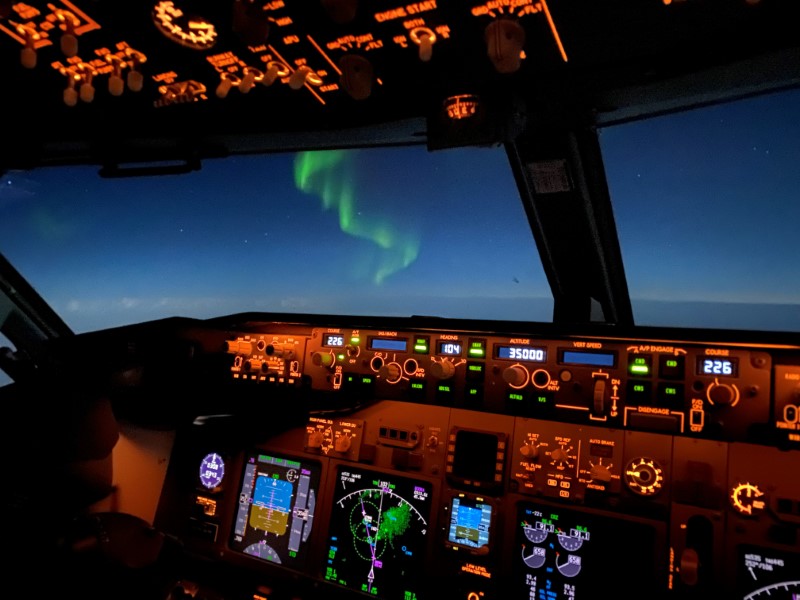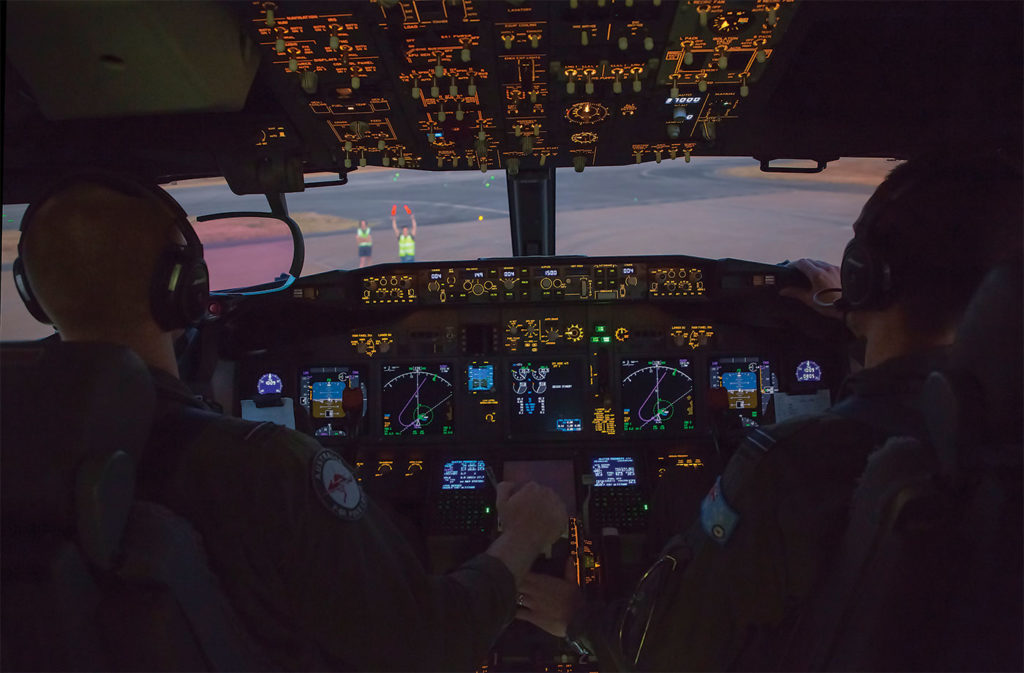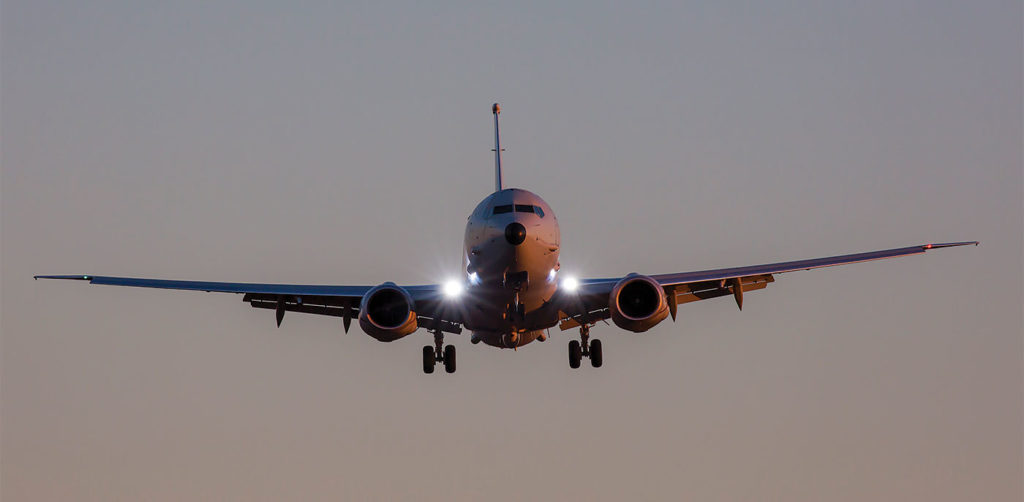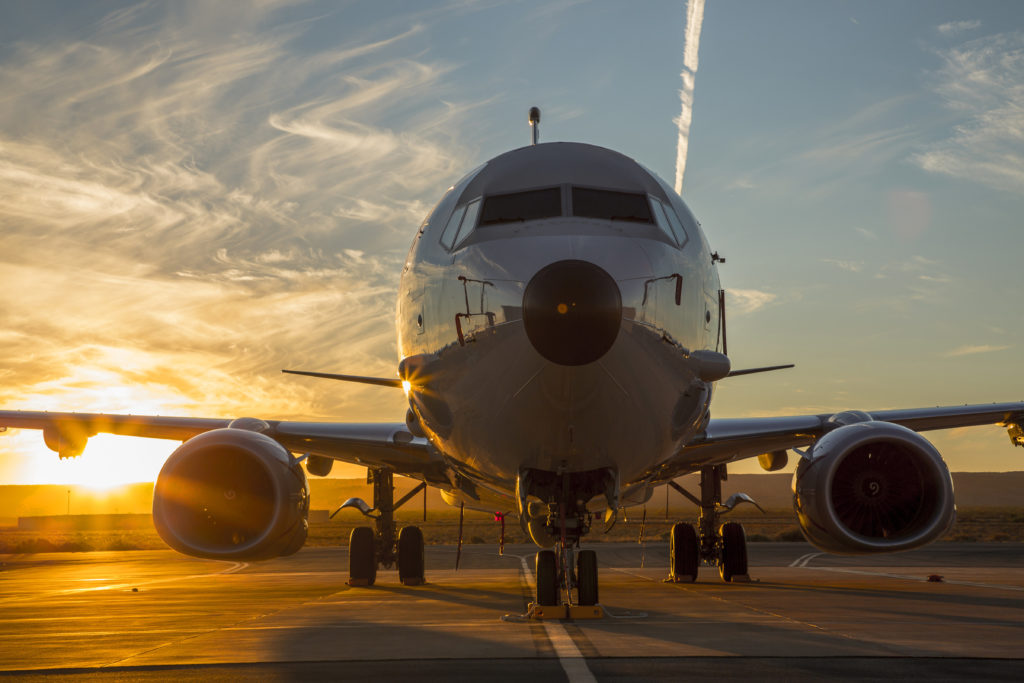Estimated reading time 13 minutes, 31 seconds.
In presentations and interviews over the past several years, senior officers in the Royal Canadian Air Force (RCAF) have described the Canadian Multi-Mission Aircraft (CMMA) project as an opportunity to think outside the box — to consider a “holistic set of capabilities,” as one former director general of Air Force Development framed it – to replace the multi-role CP-140 Aurora.
Originally acquired as a maritime patrol aircraft for anti-surface and anti-submarine warfare (ASW), the CP-140 was deployed as an overland intelligence, surveillance, and reconnaissance (ISR) platform in Iraq between 2014 and 2017. The Air Force is now completing the fourth and final block of a 20-year incremental modernization project that will add beyond-line-of-sight satellite communications and tactical datalink exchange network access.
The added capability has made it a formidable platform. (An Aurora crew from 407 Long Range Patrol Squadron recently defended an ASW competition title near Guam against newer aircraft.) But it’s also caused the RCAF to consider whether the eventual Aurora replacement should be a one-for-one replacement, or a solution that involves multiple aircraft — including remotely piloted platforms.

“We are looking to take advantage of technology,” Col Dave Pletz, director of air requirements, told Skies last fall.
The baseline capability for a new platform will be the current CP-140 airframe, but the Air Force is very aware of opportunities presented by emerging technologies.
“We see this project having outstanding potential to bring much more than what the CP-140 is able to do now,” said Pletz, so the “arcs are wide open” for ideas.
In early February, the Canadian government issued a request for information (RFI) — on behalf of the RCAF — to prospective defense and aerospace companies to better understand how it should develop the CMMA requirements as it moves through an analysis of options.

In addition to spelling out 13 high-level mandatory requirements (HLMRs) that the Air Force envisions for the eventual solution, the RFI raised the prospect of acquiring one or more manned military off-the shelf (MOTS) fleets with few or no modifications; a modified MOTS platform; a militarized civilian off-the-shelf (COTS) airframe (in presentations to industry, former RCAF commander LGen Mike Hood floated the notion of modifying a Bombardier-developed Q400); or a mix of piloted and remotely piloted MOTS fleets.
Boeing was the first to issue a public response to the RFI. The U.S. aerospace giant is heavily invested in manned and unmanned airpower teaming, but when the company submits its proposal for CMMA, it will likely be a P-8A Poseidon — a multi-mission aircraft the manufacturer believes is the only proven and affordable military solution.
To date, 146 P-8s are in service with five military customers, including the U.S. Navy, Indian Navy, Royal Australian Air Force, Royal Air Force, and Royal Norwegian Air Force, which received its first aircraft in February. The Royal New Zealand Air Force, German Navy, and Republic of Korea Navy are also on contract for 15 aircraft. Since 2012, the global fleet has accumulated over 400,000 flight hours across a range of mission sets, from the Arctic to the South Pacific and Indian oceans.

“[Those] are the same mission sets that are listed in the RFI – anti-submarine warfare, anti-surface warfare, ISR, search-and-rescue, humanitarian assistance, and disaster relief,” Sean Liedman,Boeing’s director of mobility and surveillance business development, said in a recent interview. “The P-8 truly has off-the-shelf, out-of-the-box capability across all 13 high-level requirements.”
Of importance for the RCAF, four of the current operators are 5 Eyes partners, he added. Beyond the obvious tactical interoperability of flying the same platform and mission systems, is the shared logistical infrastructure. A former U.S. Navy pilot, Liedman noted the importance of interoperability among Lockheed P-3 Orion turboprop operators. (The CP-140 is a P-3 variant.)
“On a couple of occasions coming back across the Atlantic, I experienced a malfunction of some kind in a P-3, and we just dropped into Greenwood [Nova Scotia] and borrowed a part from the Canadians,” he recalled. “They were even sometimes kind enough to give us the maintenance services and install it so we could get some crew rest. That is a powerful aspect of the P-8 as a CMMA solution – it’s not going its own way and losing that ability to rely on that global logistical infrastructure.”

Meeting Requirements
The RCAF’s core requirements include secure and non-secure line-of-sight and beyond-line-of-sight communication tools, as well as the ability to conduct multi-spectral sensing, process and analyze the data onboard the aircraft, and access external information sources in real or near-real time. Here, the Air Force foresees exploiting automation, data fusion, artificial intelligence, and machine learning decision support tools.
The P-8 comes with an open mission systems architecture that incorporates an integrated sensor suite, which includes a multi-node radar, an electro-optic infrared (EO/IR) camera, and electronic signal detection sensors to find, identify, locate, and track surface targets. For sub-surface warfare, the suite includes an integrated acoustic sonobuoy launch and monitoring system. Most of the mission system interfaces are commercial, Liedman noted, allowing for integration of emerging technologies in the future.
Connectivity is provided through satellite communications, line-of-sight radios, and data links to transmit voice, images, video, and other data. And “the U.S. Navy is working to integrate a wideband SATCOM solution,” he added.

At the Dubai Air Show in November 2021, Boeing also began promoting an internally funded and developed multi-mission pod (MMP) to expand sensor payload capacity. The 20-foot pod, which is attached to the underbelly of the forward fuselage, is designed to be installed at the squadron level and could carry a dual-sided AESA radar, an EO/IR sensor, a signals intelligence gathering payload, or a communications relay capability, among other sensors.
“The customer has the freedom to integrate whatever package they want within that MMP to meet their sovereign requirements beyond the baseline capability of the aircraft,” said Liedman. “The sensors on the airplane meet all of the requirements of today, but they are limited by physics, because of the apertures that fit within the airplane. When you extend to a larger aperture, now the laws of physics open up.”
The RCAF wants a range of kinetic and non-kinetic weapons for maritime and land operations, with the ability to “execute multiple missions within a single flight, and . . . respond to new missions and taskings in flight.”

While the Air Force acknowledges that “some missions may require specific capabilities,” it would prefer to “conduct most missions using the same aircraft configuration.”
The P-8 offers a military-standard 1760 digital data bus and a digital stores management system, so “out of the box it is capable of interfacing and integrating with any of the modern digital weapons,” explained Liedman.
The U.S. Navy has certified the MK 54 anti-submarine torpedo and AGM-84 Harpoon anti-ship missile, and is integrating the AGM-158C long range anti-ship missile. The P-8 can carry torpedoes, missiles, bombs, depth charges, mines, and sonobuoys in the weapons bay. As well, it can fire the AGM-65 Maverick land attack missile, AIM-9 Sidewinder, and AIM-120 AMRAAM from underwing hardpoints.
“The platform is capable of integrating any other weapon,” he said. “It is simply a matter of doing the integration and the safe separation and carriage testing to achieve a flight clearance.”

The Poseidon is based on Boeing’s 737-800 fuselage, with the longer wings of the -900. Like the 737 Next Generation (NG) variant, it features two 27,300-pound-thrust CFM56-7BE engines and a max takeoff gross weight of 198,200 lb (90,000 kg).
Not surprisingly, extended range and endurance are among the RCAF’s top five requirements. Specifically, the Air Force is starting with a minimum range of 1,178 nautical miles (2,182 kilometers) to cover the distance between a main operating base such as 19 Wing Comox, British Columbia, and the edge of Canada’s western area of responsibility.
The U.S. Navy set a range threshold of 1,200 nm (2,222 km) with four hours on station, with a full payload of over 22,000 lb (9,979 kg), when the aircraft was developed in the early 2000s. External weapons or an underbelly pod obviously create added drag, but the P-8 “exceeds it in all configurations,” said Liedman.
And unlike the Aurora, the Poseidon is capable of air-to-air refueling. “The Navy is using this today in its deployed operations in the Pacific theatre,” he added.

While the RCAF may be weighing the benefits of a Canadian-built, militarized commercial platform, Boeing believes a dedicated MOTS aircraft should be the more affordable option to procure and sustain over several decades. Liedman noted that research and development costs have already been paid for, and the price per airframe has decreased 30 percent since low-rate initial production began a decade ago.
As to the RCAF’s requirement for upgradability as technology evolves, he pointed to the spiral development plan that the U.S. Navy and partner nations have adopted to integrate new capability.
“From a Canadian perspective, [the RCAF] can leverage that without investing more,” he said. “Or, should Canada decide to invest in Canadian-unique capability, that opportunity exists as well.”
As part of the RFI, the government has asked prospective bidders where they see opportunity for Canadian content and innovation in their CMMA solution. Liedman observed that Canadian companies already contribute to the 737-800, from the landing gear to components on the CFM56 engines. CAE provides the 737-800 flight simulator, which also serves as the baseline for the P-8A operational flight trainer. All P-8As, he added, feature an L3 Wescam EO/IR sensor.

“We see significant opportunity for Canadian industry participation for in-service support and sustainment,” said Liedman.
The P-8 shares 86 percent commonality with the 737 NG product, and “there are more than 100 737 NGs operating in Canada — which means you already have commercial 737 infrastructure to leverage for supply chains and MRO.”
Though Liedman would not reveal specifics, he said Boeing was assembling Canadian partners under a “Team Poseidon” banner to deliver future in-service support from whichever line of maintenance the RCAF requires.
Regarding overall Canadian military procurement, Boeing has suffered recent setbacks. In April 2021, Public Services and Procurement Canada (PSPC) did not qualify the Boeing KC-46 as a candidate for the RCAF’s Strategic Tanker Transport Capability project. More recently, in December, PSPC ruled out the Boeing F/A-18 E/F Block III Super Hornet for the Future Fighter Capability Project.
If those decisions are cause for concern, Liedman did not express any.
“Obviously, we are disappointed with the outcomes of those two other campaigns,” he said, “but we look to move forward on a fair playing field for the P-8 and other campaigns in Canada.”


So what happens if a P8 needs to land on an arctic airstrip? It can”t. All of the high-arctic airstrips are gravel.
Install the 737 gravel kit. It’s been around for decades. Mod it if need be.
Only the B737-200 has a gravel kit. Gravel deflector and nacelle/powerplant mods. It cannot be used or modified for an NG.
The CP-140 never lands on gravel strips either so it’s not really that much of a requirement.